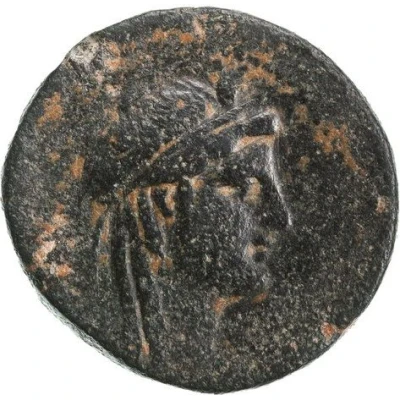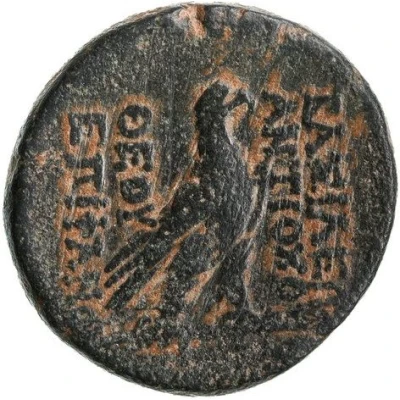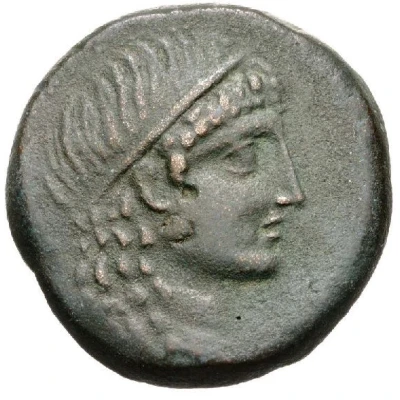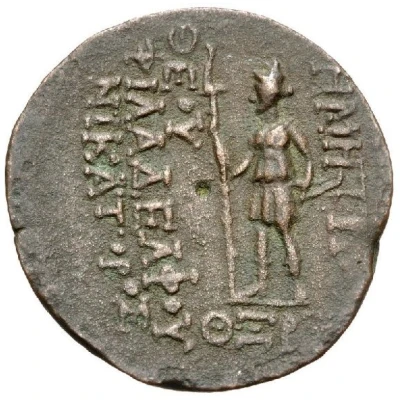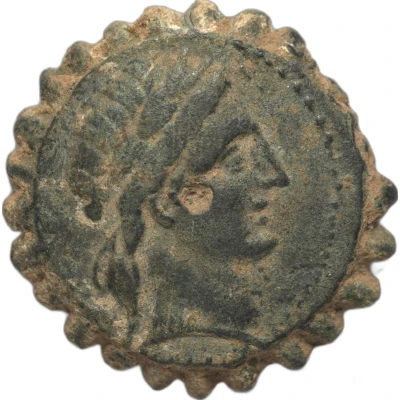
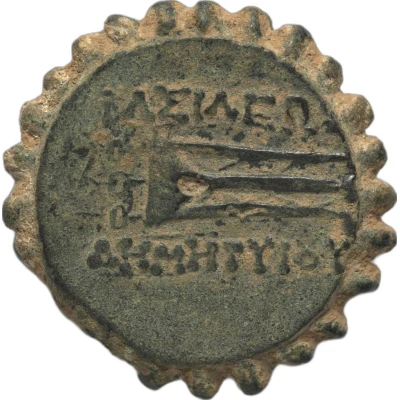

© wilcox (CC BY-SA)
Tetrachalkon - Demetrius I Soter Antioch 162 BC - 150 BC
| Bronze | 16.0 g | 25.0 mm |
| Issuer | Seleucid Empire (Seleucid Empire (305 BC - 64 BC)) |
|---|---|
| King | Demetrios I Soter (161 BC - 150 BC) |
| Type | Standard circulation coin |
| Years | 162 BC - 150 BC |
| Value | Tetrachalkon (1⁄12) |
| Currency | Drachm |
| Composition | Bronze |
| Weight | 16.0 g |
| Diameter | 25.0 mm |
| Shape | Round (irregular, Serrate Edge) |
| Technique | Hammered |
| Orientation | Variable alignment ↺ |
| Demonetized | Yes |
| Updated | 2024-10-10 |
| Numista | N#409813 |
|---|---|
| Rarity index | 94% |
Reverse
Tripod.
Script: Greek
Unabridged legend: BAΣΙΛΕΩΣ ΔHMHTPIOY
Translation: King Demetrios
Edge
Serrated
Interesting fact
One interesting fact about the Tetrachalkon coin is that it features a unique blend of Greek and Persian design elements. The obverse (front) side of the coin depicts the portrait of Demetrius I Soter, while the reverse (back) side features an image of the goddess Tyche, who was revered in both Greek and Persian cultures. This blending of cultural influences reflects the complex history of the Seleucid Empire, which was founded by a Greek general but eventually came to encompass a vast territory that stretched from the Mediterranean to the Indus River.
